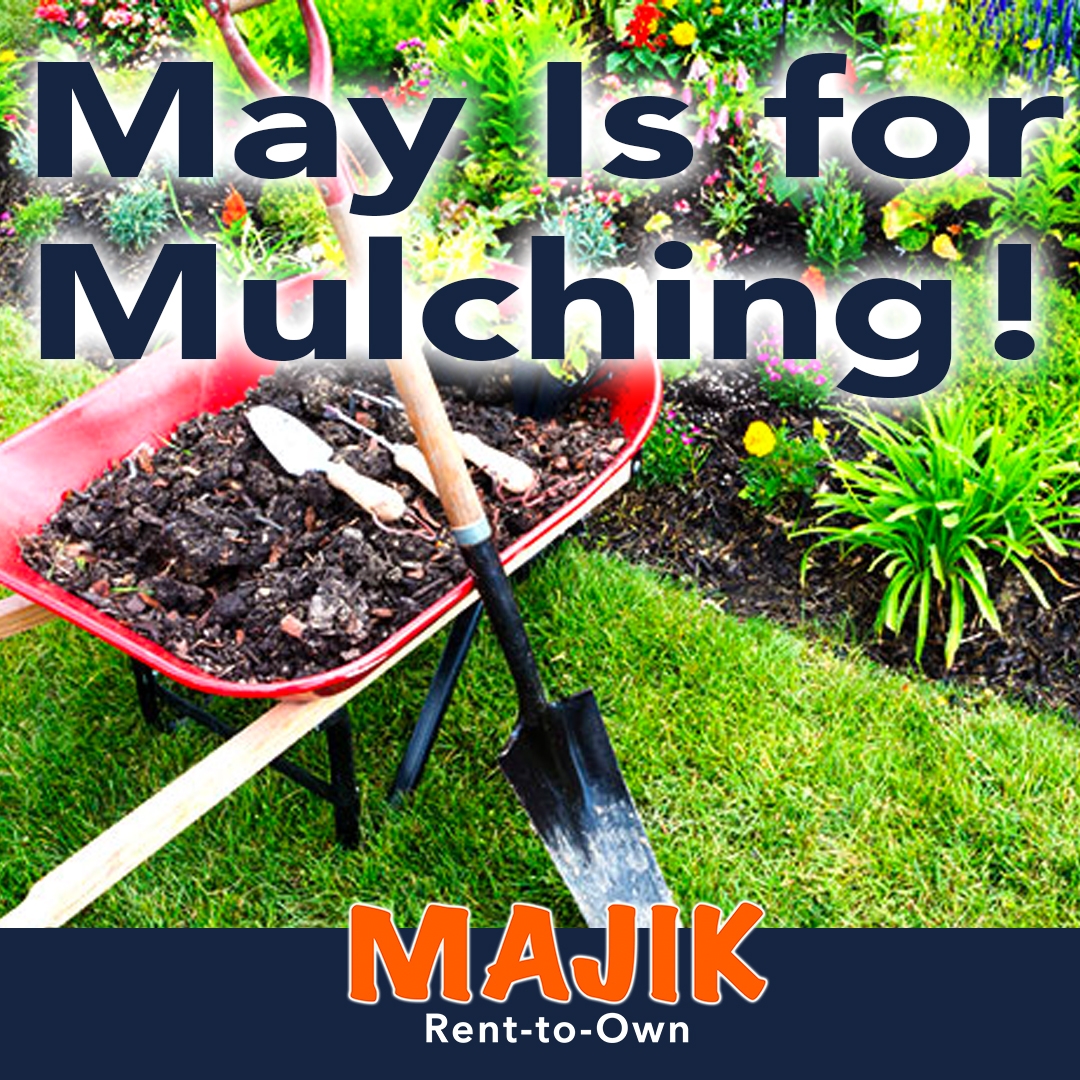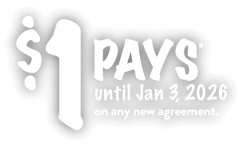
Decorate and protect your beds now, before the heat of summer sets in
May Is for Mulching
You've done all the hard work of early spring, cleaning out the planting beds and waking up your lawn. Now it's time to decorate, and all across the United States the decorating material of choice is mulch.
A layer of mulch on a planting bed helps suppress weeds, retain moisture, and moderate soil temperature. But the biggest problem we see today is too much mulch. When added year after year, mulch can actually harm plants by creating a layer that doesn't decompose and doesn't allow root growth. The soil becomes so matted that nutrients and water can't penetrate to the roots, and the plants will suffer.
Piling mulch up around trees is also a bad idea, and not only because it makes a tree look like it's perched on a volcano. Excessive mulch causes rot in the trunk, creates a home for insects that attack the tree, and encourages the development of a secondary root system. A tree with a secondary root system in the mulch zone starts to depend on it, causing the primary, deeper, root system to wither. That makes the tree vulnerable in a drought, when the soil is dry near the surface and the primary roots are no longer able to draw deep water. If the primary root system dies, the tree loses its anchor and is at risk of toppling over in heavy wind or snow.
My recommendation is to strip off as much of the old mulch as you can and top dress with an inch of new mulch. If you start with stripped beds and add one inch a year, you'll only have to strip them every three years. The goal is to keep the mulch layer less than three inches deep. If you haven't fertilized recently, apply some low-nitrogen balanced fertilizer to the stripped beds before you put down the mulch. Make sure the mulch doesn't touch the trunk of trees or shrubs.
Buying Mulch
Any organic material can be mulch, including ground-up leaves, compost, buckwheat hulls, ground-up bark, lawn clippings, wood chips, bark nuggets, or even stone. In my opinion, the best mulches are compost and rotted wood chips. These products are alive and full of beneficial bugs, worms, and micronutrients. They add to soil composition, and they're inexpensive. Bark mulch is the most common, but lighter mulches like buckwheat hulls and compost are better for perennial beds.(Shallow-rooted perennials do better when they don't have to compete with heavy mulch for micronutrients in the soil.)
Whatever material you buy, make sure it has no weed seeds or later in the summer you'll be in for a big surprise. If you're buying compost or horse manure, be sure it's aged or it can burn your plants. If you choose a dyed mulch be sure it's not demolition debris, since that can contain nails, pressure-treated lumber, or worse.
As far as I know there's no mulch that's been treated with insecticide to keep bugs away. If you're worried about termites, use a mulch that has little or no actual wood in it. (Bark doesn't attract termites — it's the wood they feed on.)
A yard of mulch will cover 300 square feet when spread an inch thick. Measure carefully, and buy only what you need. There's nothing more frustrating than paying for something and having a large pile of it left over.
Applying Mulch
Laying down mulch can be hard work. For small jobs, you can carry a bag from your car directly to the bed. For larger areas, you'll probably be buying in bulk and having it delivered to your house, so you'll need a wheelbarrow and the proper tools.
If you're using stone as mulch, a square shovel is very efficient for loading the wheelbarrow. (A pointed shovel will tire you out faster than any other tool. It's designed for slicing through soil, and it can't slice through mulch.) Don't dig into the pile, but slide the shovel along the ground to get under the stone. Stone is very heavy, so be careful not to overload the wheelbarrow.
Bark mulch can be loaded with a square shovel, but a mulch fork will let you load the whole wheelbarrow in just three or four scoops. Again, run the square shovel or mulch fork into the bottom of the pile rather than digging in.
Unload the mulch directly from the wheelbarrow to the beds, but don't dump the entire contents at once or you'll end up with too thick a layer. Take the mulch out of the wheelbarrow with your hands, a square shovel, a mulch fork, or a small bucket and lightly spread it to a depth of one inch. Don't put mulch on top of ground covers or spreading junipers, as mulch will limit their growth or even kill them. Never dump any kind of mulch onto the grass, or even onto a tarp on the grass — it will kill the lawn underneath if you don't remove it immediately.
Remember that the purpose of mulch is to fill in bare spots in your beds, so the more ground cover and plants you put in the less mulching you'll have to do.





